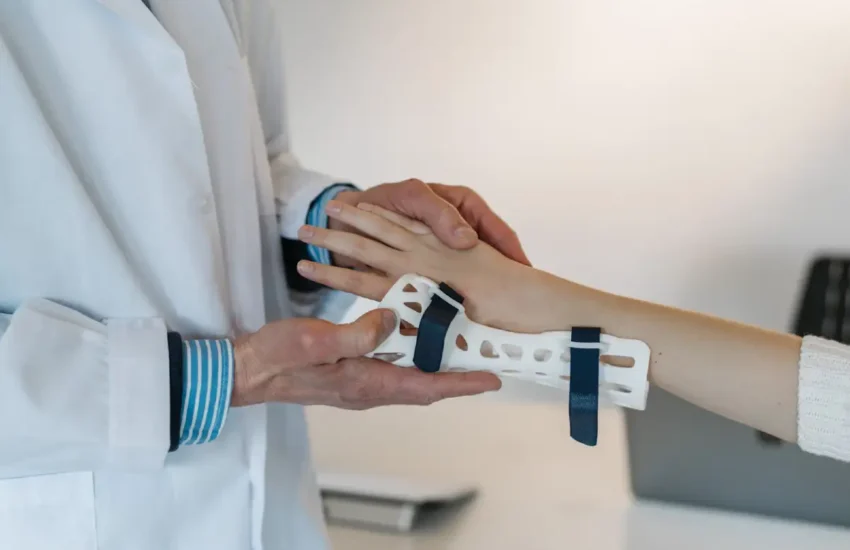The Surgeons Perspective – Mastering VATS Techniques
It is a tremendous honor and responsibility for surgeons that patients trust to explore the innermost sanctums of the human body. This trust is based on the physician’s skills and enables them to achieve results that may not be achievable through other approaches.
Work psychologists have found that the positive task characteristics of meaningful work and responsibilities are generally associated with greater job satisfaction across professions.

Basics of VATS
VATS is a minimally invasive lung, lymph nodes, and chest wall surgery technique. It allows healthcare providers to remove a tumor, drain fluid from the lung, or perform other thoracic procedures using a small tube (called a thoracoscope) and special tools inserted through one or more small cuts in your chest wall. Compared to traditional open surgery, it often results in shorter hospital stays and recovery times.
A breathing tube is inserted down your throat to deliver oxygen to your lungs as a surgeon like Armen Parajian performs VATS while you are under general anesthesia. A hospital and a doctor’s office are acceptable locations for the treatment.
Medical education experts have discussed many ways surgeons can be trained in VATS. These include observation of experienced surgeons, watching videos, reading books or articles, attending national and international thoracic surgery courses, simulation training, etc. Konge et al. have developed an assessment tool for VATS lobectomy that can be used to assess competence in this procedure.
Surgical Techniques
VATS can be used to remove a portion of tissue for biopsy, drain fluid from the lung, or do procedures on the heart. It takes less time to perform than traditional open-chest surgery (thoracotomy). It may also cause less pain and scarring, and you can recover more quickly.
However, the procedure requires advanced training before you can safely perform it. Your healthcare provider will make several minor cuts on the chest wall and put a special camera and tools through them to perform the surgery.
Novice surgeons should be mentored and supervised until they demonstrate the skills required for competency and proficiency. Konge et al. suggest an off-theatre preparatory phase that includes virtual reality simulation dry and wet lab to familiarize with the instruments and feel of actual tissue.
Then, they recommend that trainees start with placing ports and performing minor VATS procedures, such as wedge resections, pleura biopsies, etc, before progressing to the uniportal VATS approach for lobectomy.
Instrumentation
VATS is a minimally invasive surgical technique to diagnose and treat thoracic diseases. It is a safe, effective, and cost-efficient procedure that results in shorter hospital stays and improved patient outcomes.
VATS can remove a section of a lung biopsy lymph nodes or the tissue around the lungs, heart, and esophagus. It can also be used to perform procedures such as insertion of pacemaker leads and atrial fibrillation ablation.
Although VATS lobectomy is an established procedure, it is technically demanding and requires significant experience to master. Visiting experienced uniportal VATS centers, attending wet labs, and hands-on courses can decrease the learning curve of this technique.
Patient Care
Generally speaking, VATS is used for diagnostic and therapeutic purposes. It helps diagnose and treat pleural, mediastinal, and diaphragmatic diseases such as pulmonary cholestasis (cholecystitis), thoracic cancers, bronchiectasis, and pleural effusions.
To master VATS, surgeons need to practice on several patients. They can do this by observing experienced VATS surgeons, reading anatomic atlases, attending national and international thoracic surgery courses and seminars and simulation training, etc.
It is recommended that beginners start with small tumors with no hilar lymph node involvement (cT1a/b). It also helps to perform chest computer tomography scans as it helps in identifying vascular anomalies, calcified lymph nodes, and other unanticipated disease findings that could prevent resection via the VATS approach.
Accurate patient selection, planning and preparation, careful nursing, and close collaboration are the critical elements for a successful non-intubated VATS lobectomy procedure. Konge et al. developed an assessment tool that contains ten items based on the opinion of a panel of expert physicians (16). It can be used to assess and critique a VATS operative performance.


